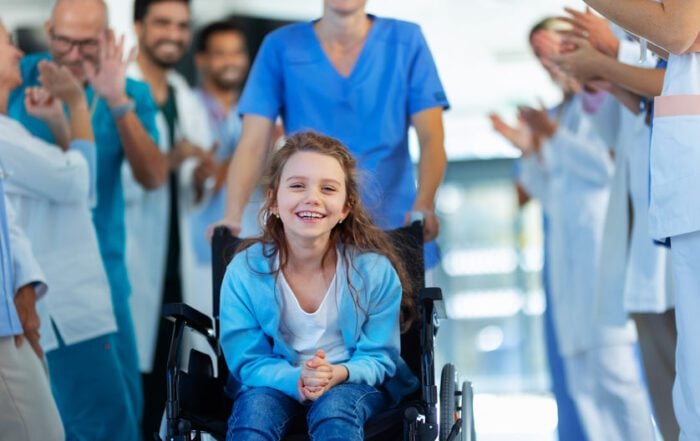The Many Benefits Of Arthroscopy
Doctors perform millions of surgical procedures on joints every year. Some are lifesaving operations while others are elective to improve quality of life. Whatever the reason, the thought of surgery is daunting for some individuals. Surgery often requires the doctor to make a large incision to access the damaged or diseased joint. Now, there is an alternative to open surgery. With arthroscopy, doctors and patients can experience an easier, safer procedure with immediate and long-term benefits.

The little camera that could
Arthroscopy is a fantastic surgical technique that has transformed the orthopedic surgery space. Joint surgery can now be performed using a tool called an arthroscope. This device is a long, thin, flexible tube with a fiberoptic camera and light at the end. A surgeon can insert the arthroscope through a small incision the size of a buttonhole and view joint structures. The camera projects a high-definition image to an external monitor. The doctor can then diagnose or confirm an underlying condition of the joint. The doctor can also correct or repair joint damage or conditions using an additional incision.
Conditions treated
Arthroscopy is helpful for issues impacting the major joints of the body. Knee damage due to injury or arthritis is a common reason for using arthroscopy. The surgeon can address meniscus tears, anterior cruciate ligament (ACL) damage, or fix patellar tracking disorders. Other common arthroscopy uses include treating torn ligaments in the shoulder, hip, elbow, wrist, and ankle. Arthroscopy can also help when treating arthritis or performing joint replacements. The device helps the surgeon remove damaged cartilage and bone to install a new joint without requiring large incisions.
Arthroscopy benefits
Why choose a small, flexible tool over an open surgery? For starters, arthroscopy is considered minimally invasive surgery (MIS), meaning the doctor only needs to make 1-3 tiny incisions to complete the procedure. For the patient, MIS means less blood loss, smaller scars, and less post-operative pain. Arthroscopy is also an outpatient procedure, meaning the patient can leave the hospital on the same day. Outpatient procedures save patients time and money while reducing the chance of infections. Patients can also recover comfortably at home. Studies also show that arthroscopy has higher success rates and results in fewer complications, providing a faster return to daily activities or sports.
Preferred by providers
The benefits aren’t just for patients, as doctors also enjoy the many advantages of arthroscopy. The device allows the surgeon to be more accurate, increasing the overall success rate of surgery. There are also reduced hospital stays and minimal post-operative care. Doctors can, therefore, perform more procedures, helping more patients. Arthroscopy also improves efficiency for the hospital through cost savings and better resource allocation. These benefits are passed on to the patient. Thanks to arthroscopy and other MIS techniques, a boom in the creation of ambulatory surgical centers (ASCs) has occurred, allowing patients to avoid the stress of large hospitals.
Are you a candidate?
While arthroscopy has many benefits, the procedure will not eliminate open surgery. The fact is that not all patients are ideal candidates for MIS. Some joint conditions may be too severe to respond to minimally invasive arthroscopy. Patients with underlying health conditions like severe bleeding disorders, diabetes, or obesity are also not good candidates. Always talk to a doctor to determine the best approach when joint surgery is needed.
Better results with MIS
Joint surgery can help address many chronic issues and injuries. While open surgery can address the problem, there are unpleasant side effects and complications are possible. With arthroscopy, only small incisions are necessary to diagnose or treat the issue. The benefits of arthroscopy, such as less pain, scarring, and higher success rates, cannot be denied. Patients with joint conditions that require surgery should consider arthroscopy for the best results.
Recent Posts
ACL Repair: Will You Have Range Of Motion With Your Knee After Recovery & Physical Therapy?
After an ACL injury, ROM can be negatively affected. ACL repair surgery helps restore function, but physical therapy is essential to ROM.
Arthroscopy: What Are The Benefits Of This Minimally Invasive Outpatient Orthopedic Procedure?
Arthroscopy can help diagnose or treat joint conditions. Benefits of the MIS include faster recovery, less pain, and fewer scars.
Posterior Interbody Lumbar Fusion: What Are The Benefits Of PLIF For People With Back Pain?
People with chronic back pain may benefit from posterior interbody lumbar fusion surgery. PLIF can reduce pain and improve stability.
Saying Goodbye To Tonsil Troubles: The Benefits Of Minimally Invasive Tonsillectomy
Chronic tonsilitis or other tonsil troubles can impact health and well-being. A minimally invasive tonsillectomy can reduce infections.








